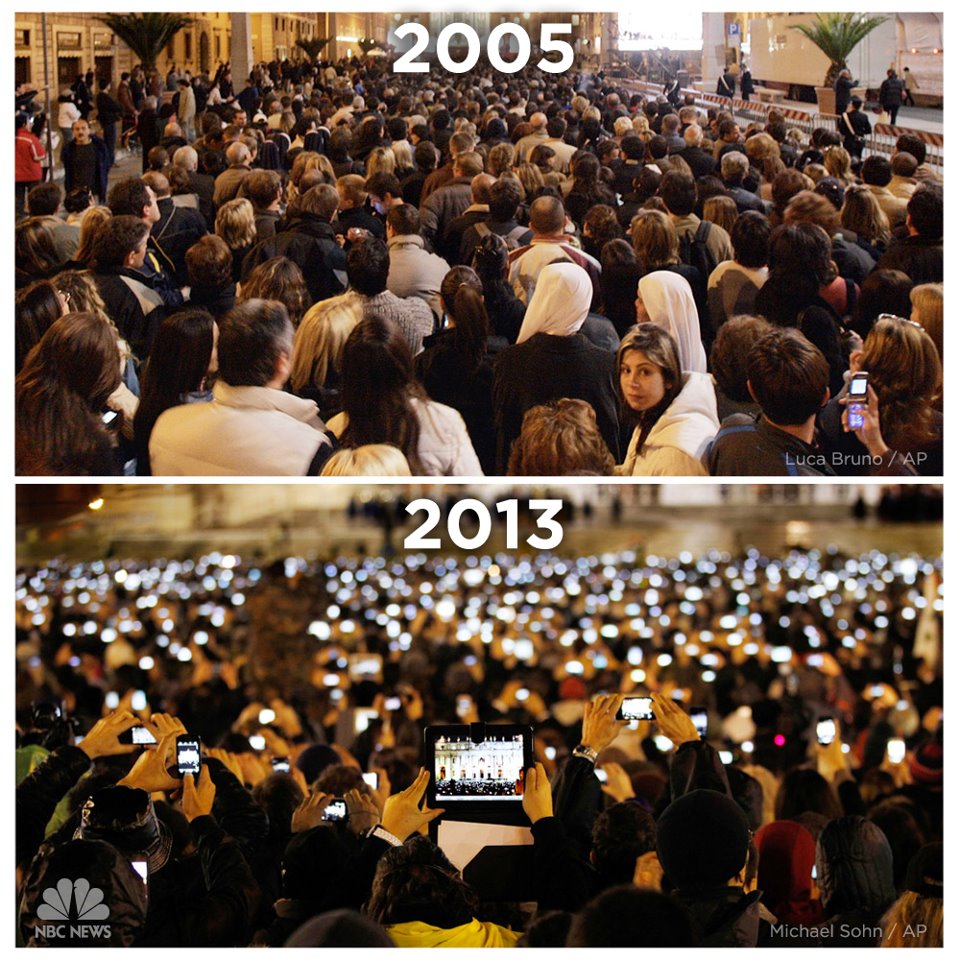Do one thing for me: ask Google to show you the Papal inauguration in 2005 versus the one in 2013. Notice anything different? Yeah, I thought so.
On Tuesday, GovDelivery hosted a federal communications summit that emphasized how gov employees can leverage data to influence the communities they serve. Keynote speaker Abhi Nemani asked the crowd a simple question: What’s changed?
Nemani took us on a journey back to a time of floppy disks and dialup connections; a time in 2003 when three of the top 10 websites were government sites, to today, when they are nearly all user generated platforms. The web has made a major shift in the past 10 years. We have moved from a strictly push experience where information is there to be searched, but not commented on, to a world of user generated and participatory content.
Tim O’Reilly has described web 2.0 as having architecture of participation. We’ve gone from a push only experience to push/pull.
So how does this apply to the government? How can the public sector get value out of its data and provide an engaged experience with its citizens?
Nemani had four rules:
- Open your doors (actually): The public sector has to be willing to look at the problems they have and share with citizens how they can navigate difficult processes.
- Create a sense of community: Create a brand and an identity. Then create a beautiful logo and put it on EVERYTHING! This gives citizens a way of relating to each other and it forms a community of people working together.
- Back good people with real support: This means $$. Sustainable scaling requires resources.
- Make it count: You can’t ask people to work for you and then throw their efforts to the side. Show them respect and that their work matters. Reach out to a celebrity and ask them to make an appearance or have the winner on their show.
So Nemani asked, “How can you make your data count?” One option: look outside the government to get projects done. Have you seen what Chicago is doing with their OpenGov Hack Night? It doesn’t cost the government anything. This group of people started in a coffee shop and made a commitment to meet every week and build tech for their city with the data that is available. It has now grown out of the coffee shop and 50-100 people show up every week to make their city better. An example of their handiwork is Clear|Streets, a website that gives information on when snowplows will be coming through in the winter so citizens know when their street will be cleared.
According to a study by McKinsey, “The economic value of open data is $3 trillion.” To this, Nemani said, “It’s not just how you open data. It’s how you create friction with it.” His suggestion: Act like a platform, because that is how people interact. You don’t have to take on the Facebooks and Yelps of the world. Instead, partner with them and deliver directly to your citizens.
For example, San Fransisco joined forces with Yelp to make health inspection scores available with the restaurant information. So now, information that used to be hidden at the back of the restaurant is in the palm of your hand.
Another example is real estate site Trulia. Code enforcement regulations are now available right in the app. This required several agencies to form a partnership and standardize their data and “work together as a collective force” to do something with the data, said Nemani. The key is to consider the citizen experience.
Nemani finished with one tip, the upsell. How can you get more people plugged in? Think about Amazon’s “Frequently purchased together” suggestions. “You’ve got them engaged, you’ve got their attention and that’s a special thing. How can you get them to do more?” Nemani asked. How can we create civic upsells?
The UK is doing a great job of upselling, and you’ll never guess where: Organ donation! Gov.uk is where citizens go to pay their taxes online. On their thank you page, there is a link that asks people to save lives by becoming an organ donor. This one link has added 350,000 registered organ donors. It’s as easy as that.
One last thing: do you remember the Google Chrome ads from the Super Bowl? At no point do they talk about the browser itself, only what you can do with it. Google was able to pitch their product in a very compelling way (some of us may have even been brought to tears… Cough, Dear Sophie) without even talking about the browser. They end with the phrase, “The web is what you make of it”.
So take a note from Google and remember: the government is what you make of it.
This blog post is a recap of the GovDelivery 8th Annual Federal Communications Summit, where thought leaders provided insightful communication strategies and tactics to help you be more effective. For more posts about the summit, click here.






[…] THE GOVERNMENT IS WHAT YOU MAKE OF IT […]
Well said, Rachel! There’s a lot of potential out there, but only if we seize the opportunities!
[…] THE GOVERNMENT IS WHAT YOU MAKE OF IT […]